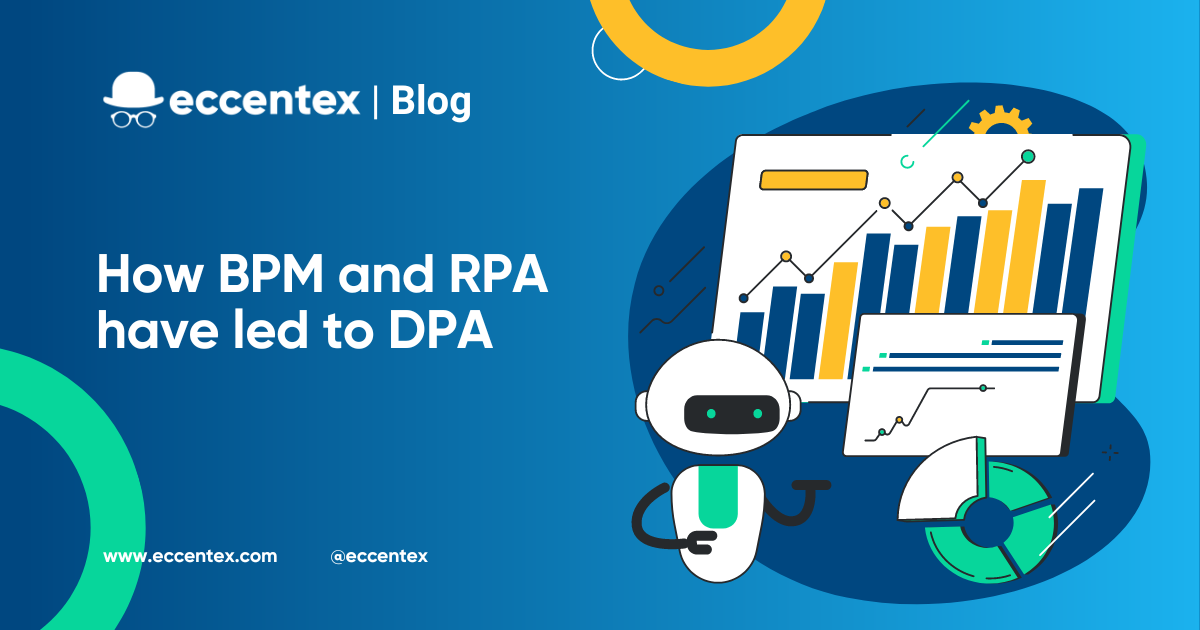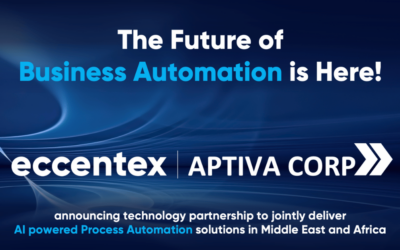Business Process Management (BPM) and Robotic Process Automation (RPA), two popular concepts whose definitions and scope have overlapped for years. In today’s software space the alphabet soup of new technologies and processes has cooked up a new term, Digital Process Automation or DPA, meant to usher in the future of digital transformation. For non-technical staff and line-of-business leaders, these various terms only add to the confusion of what technology best suits their company’s needs. So, how did we arrive at DPA?
The birth of BPM and RPA
Both terms were coined in the early 2000s after a long history of development if you include either Frederick Taylor’s “Principles of Scientific Management”, published in 1909, or Donald Hebb’s “The Organization of Behavior”, written in 1949. Taylor’s theory of scientific management focused around optimizing and streamlining work being done, rather than making people work as hard as possible, which is a key principle of BPM. And Hebb’s studies of the neurological fundamentals of learning, like when the brain learns something new and activates neurons that connect with others to form a neural network, is what laid the foundation for Machine Learning and AI.
The overall framework that made it possible for companies to adopt these methods was created by the Workflow Management Coalition, a consortium of software vendors founded in 1993 with a goal to define standards for the interoperability of workflow management systems. Members included IBM, HP, Fujitsu, and 300 more companies that all worked together to adopt and develop XPDL, the process design format which popularized XML.
Throughout their modern development the two terms have become even more closely related. Simply put, RPA speeds up processes by automating them while BPM focuses on improving already existing ones. The two work together to keep workflows running at peak efficiency with as little errors as possible.
What makes Digital Process Automation different?
As new technologies and software are developed, the systems that leverage them need to improve as well. With the rise of digital transformation trends before and after the pandemic, companies are facing challenges to modernize their legacy systems and workflows. DPA is what tackles those issues head on.
The differences
The key differences between DPA and its predecessors is an emphasis on low-code development, consumers-grade user experiences, and AI-based innovation. This is in line with digital transformation initiatives that emphasize providing every level of the organization, regardless of coding experience, the ability to streamline their workflows. As expected, AI will help accelerate that adoption as well by reducing programming requirements among employees.
DPA, much like its predecessors, functions in two types of processes, deep and wide:
- Deep: handles long-running processes and creates BPM centers led by Lean Six Sigma, a data-driven philosophy of improvement that weighs error prevention over detection.
- Wide: more suited for developing long tail applications that codify the hundreds of manual processes, mainly through low-code.
The benefits
An advantage of DPA is it enables more agile operations, which in turn lowers costs and allows for a higher level of customer focus, like creating an enhanced customer experience similar to what B2C software and services provide. This is largely due to BPM being designed to further efficiency and compliance, while DPA extends the various business processes to everyone involved so organizations can provide that higher level of experience.
Is DPA for me?
In an ever-changing software landscape and globalized business environment change is inevitable. As companies need to adopt new technologies and channels for reaching their customers, they will quickly discover that BPM is incapable of meeting all their requirements. Despite being great for improving efficiency in already existing processes, it does not excel in automating repetitive tasks or reducing the need for human intervention. Additionally, RPA does enhance automation, but it does not focus on the customer experience which is why DPA is necessary to work with it.
While competing in similar software arenas these technologies are radically different. Although they evolved from one another they currently address different problems and often need to be deployed together to accomplish their intended goal. If your organization struggles with efficiency, then BPM or RPA are a better solution. However, for companies looking to focus on building lasting relationships and experiences with their customers, look no further than DPA.



